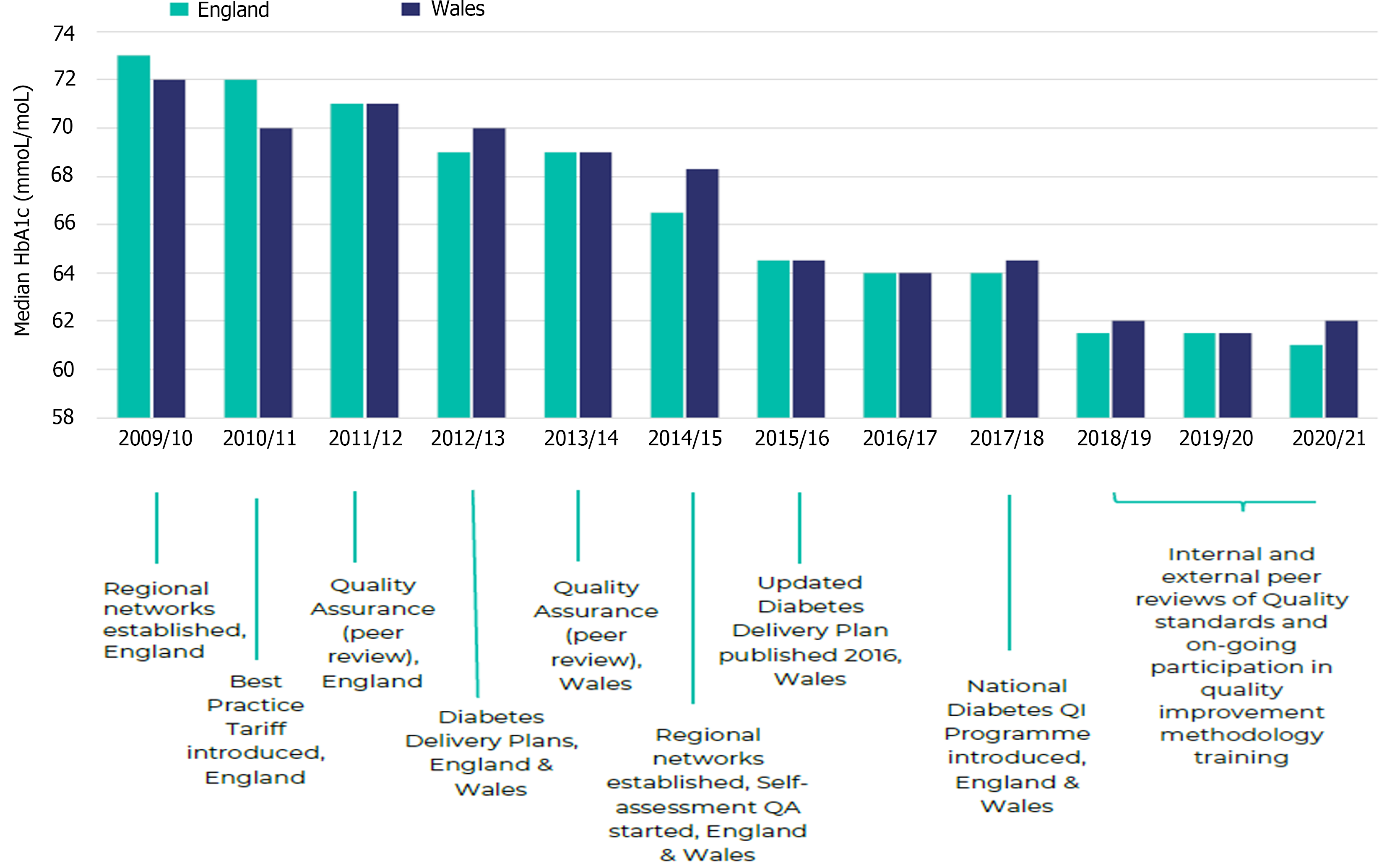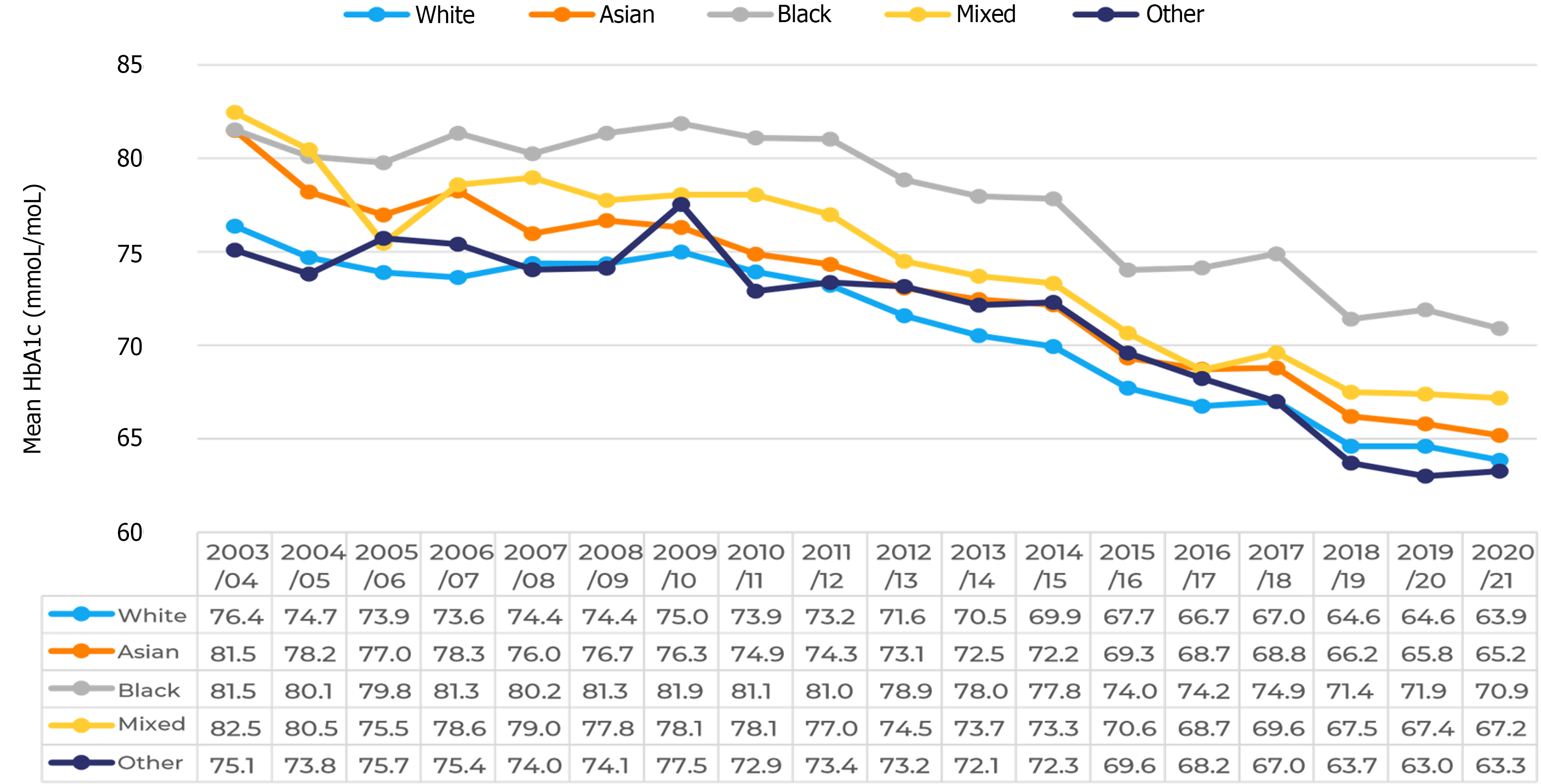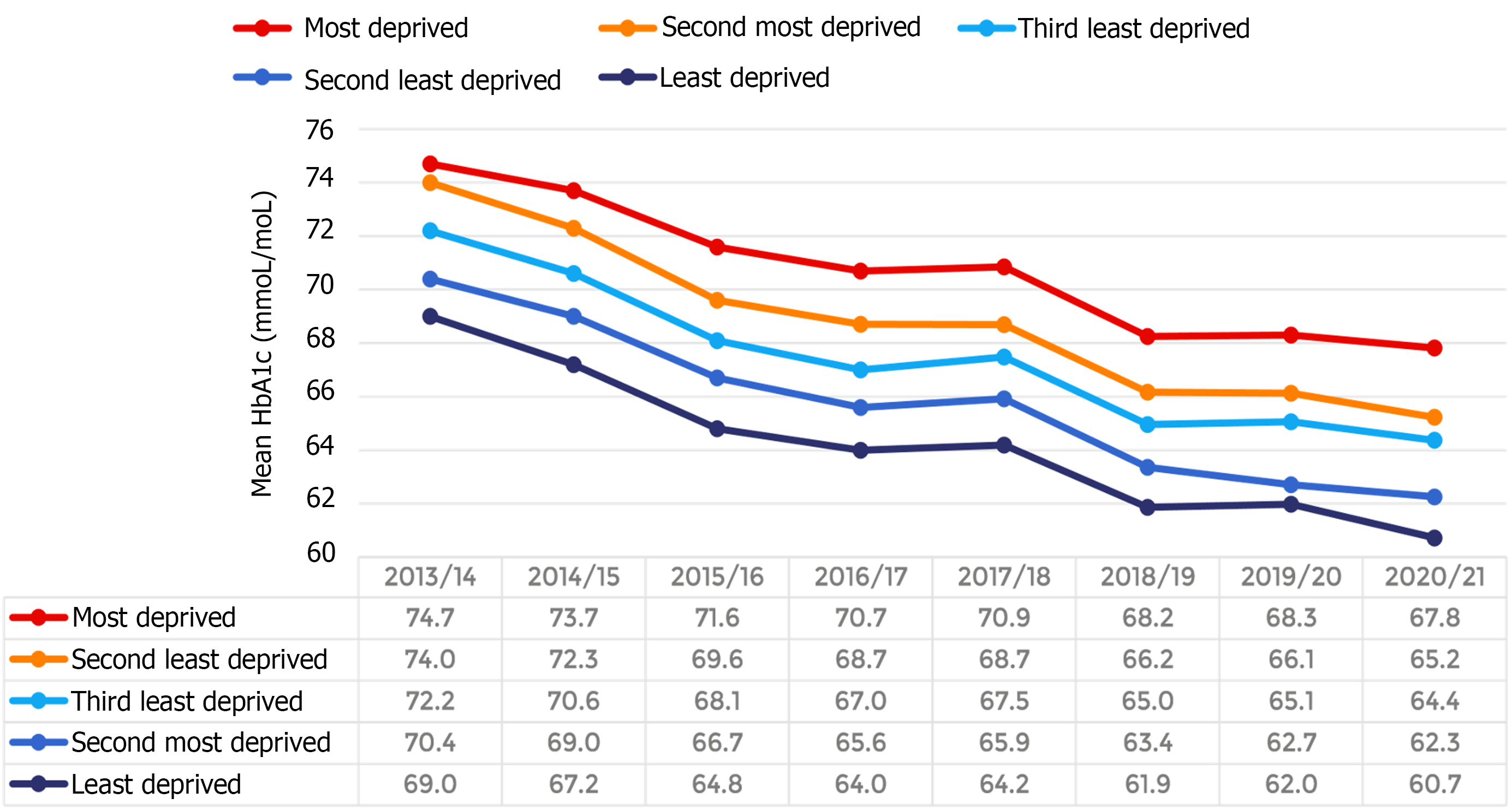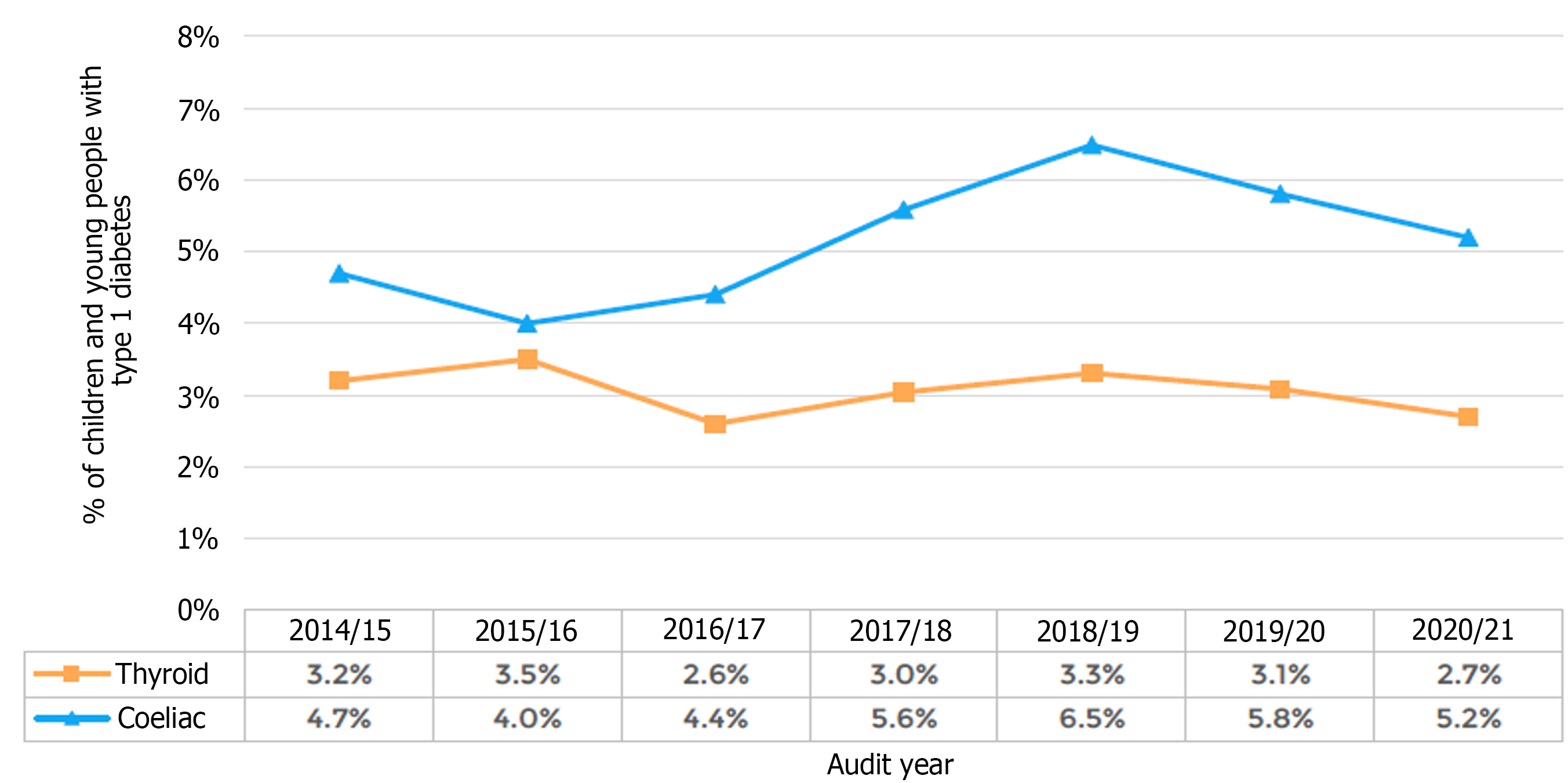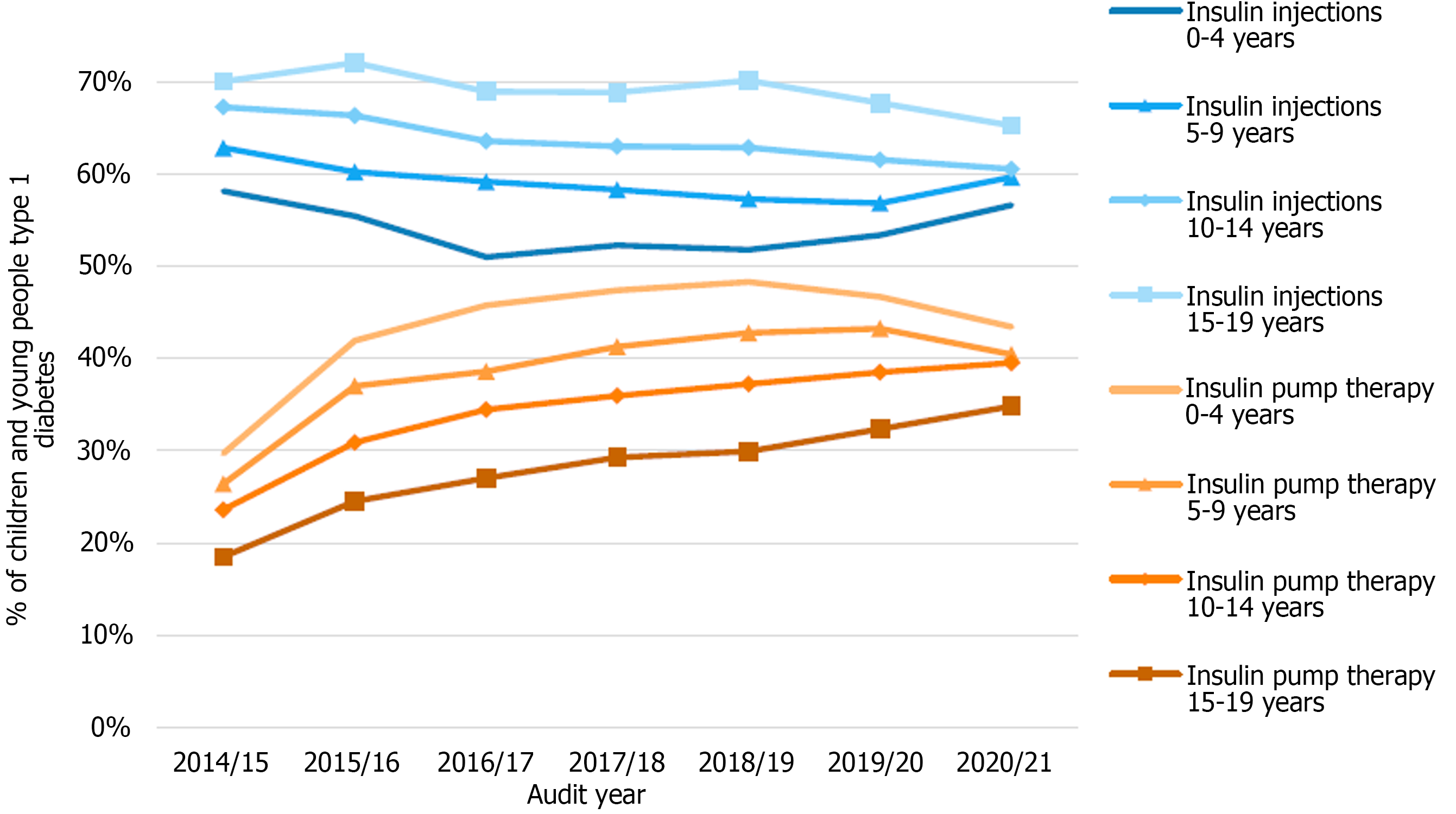Copyright
©The Author(s) 2023.
World J Diabetes. Aug 15, 2023; 14(8): 1194-1201
Published online Aug 15, 2023. doi: 10.4239/wjd.v14.i8.1194
Published online Aug 15, 2023. doi: 10.4239/wjd.v14.i8.1194
Figure 1 Median glycated hemoglobin of all types of diabetes in England and Wales from 2009/2010 to 2020/2021 for children and young people under the age of 18 years (permission to reproduce from National Paediatric Diabetes Audit Royal College of Paediatrics and Child Health and Healthcare Quality Improvement Partnership).
Citation: National Paediatric Diabetes Audit Annual Report 2021-22: Care Processes and Outcomes. London: Royal College of Paediatrics and Child Health, 2023. Copyright © 2023 Healthcare Quality Improvement Partnership (Supplementary material).
Figure 2 Mean glycated hemoglobin for children and young people with Type 1 diabetes in England and Wales by ethnic group from 2003/2004 to 2020/2021 (permission to reproduce from National Paediatric Diabetes Audit Royal College of Paediatrics and Child Health and Healthcare Quality Improvement Partnership).
Citation: National Paediatric Diabetes Audit Annual Report 2021-22: Care Processes and Outcomes. London: Royal College of Paediatrics and Child Health, 2023. Copyright © 2023 Healthcare Quality Improvement Partnership (Supplementary material).
Figure 3 Mean glycated hemoglobin for children and young people with Type 1 diabetes by deprivation quintile, 2013/2014 to 2020/2021 (permission to reproduce from National Paediatric Diabetes Audit Royal College of Paediatrics and Child Health and Healthcare Quality Improvement Partnership).
Citation: National Paediatric Diabetes Audit Annual Report 2021-22: Care Processes and Outcomes. London: Royal College of Paediatrics and Child Health, 2023. Copyright © 2023 Healthcare Quality Improvement Partnership (Supplementary material).
Figure 4 Percentage of children and young people with Type 1 diabetes with thyroid or coeliac disease in England and Wales, 2014/2015 to 2020/2021.
Prevalence of coeliac disease was highest among the white children and young people (CYP) and thyroid disease was commonest among the Asian CYP in 2020/2021. Citation: National Paediatric Diabetes Audit Annual Report 2021-22: Care Processes and Outcomes. London: Royal College of Paediatrics and Child Health, 2023. Copyright © 2023 Healthcare Quality Improvement Partnership (Supplementary material).
Figure 5 Percentage of children and young people who completed a full year of care recorded as receiving individual health checks, 2004/2005 to 2020/2021.
Citation: National Paediatric Diabetes Audit Annual Report 2021-22: Care Processes and Outcomes. London: Royal College of Paediatrics and Child Health, 2023. Copyright © 2023 Healthcare Quality Improvement Partnership (Supplementary material).
Figure 6 Percentage of children and young people either on daily insulin injections or pump therapy by age group, 2014/15 to 2020 /21.
Citation: National Paediatric Diabetes Audit Annual Report 2021-2022: Care Processes and Outcomes. London: Royal College of Paediatrics and Child Health, 2023. Copyright © 2023 Healthcare Quality Improvement Partnership (Supplementary material).
- Citation: Ng SM, Soni A. Ten-year review of trends in children with type 1 diabetes in England and Wales. World J Diabetes 2023; 14(8): 1194-1201
- URL: https://www.wjgnet.com/1948-9358/full/v14/i8/1194.htm
- DOI: https://dx.doi.org/10.4239/wjd.v14.i8.1194









